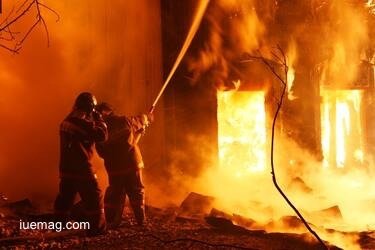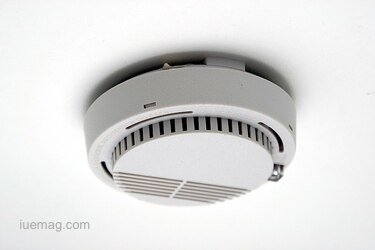

Why Upgrade to a Wireless Smoke Alarm for Your Home Safety
 The best protection for houses against the numerous risks associated with undiscovered smoke continues to be the installation of a properly functional smoke alarm. A basic smoke alarm's limitation is that it will only warn those in the immediate vicinity. This can lead to a situation in which the smoke alarm doesn't even go off. In a two-story house, there is virtually no guarantee that someone in the upper bedroom won't be able to hear it. It is one of the most obvious shortcomings of a typical smoke detector.
The best protection for houses against the numerous risks associated with undiscovered smoke continues to be the installation of a properly functional smoke alarm. A basic smoke alarm's limitation is that it will only warn those in the immediate vicinity. This can lead to a situation in which the smoke alarm doesn't even go off. In a two-story house, there is virtually no guarantee that someone in the upper bedroom won't be able to hear it. It is one of the most obvious shortcomings of a typical smoke detector.Take quick action to protect your house from potential fire threats with a wireless alarm
You need a smoke and fire defense system that can inform everyone in the house when seconds count when it comes to safely fleeing in an emergency. By being able to connect with one another, SD19-W wireless smoke alarm eliminates the restrictions of a conventional smoke detector. Interconnected smoke alarms will enable homeowners to design a customized smoke and fire defense system that is particular to their property, demonstrating a great deal of intrinsic flexibility. Those smoke detectors will all ring off at the same time when activated. All other connected gadgets in the house will be alerted by an interconnected smoke alarm that detects smoke in the basement. Even better, SD19-W wireless smoke alarm has a voice capability that can identify the threat's nature and location. The smoke and fire defense system in any home can be strengthened by this level of precision detection. Knowing that your property is being watched over 24/7, even when you are away, will give you great peace of mind.
Pros of wireless smoke alarm
- Anywhere installation of wireless fire alarms is simple; the key benefit of any wireless system is portability. In contrast to wireless systems, which just require a few nuts, bolts, and screws, traditional wired systems require hardwiring. They can therefore be put in place anywhere and moved around as required.
- Changing the layout of your building? Wireless fire alarms are simple to adjust. Do you need to relocate your fire alarms? No matter how your building changes, wireless fire alarms may be relocated around as needed to ensure you always have the optimum protection.
- Since wireless systems run on batteries, you won't need to connect your system to a power grid, therefore wireless fire alarms will still function if the power goes out. As a result, even in the event of a blackout, your system will continue to function as usual.
 In its current state, wireless technology does not give designers complete freedom to place gadgets and appliances wherever they wish. For placing equipment with SD19-W wireless smoke alarm on walls and ceilings, designers must adhere to minimal requirements. The placement of equipment and appliances must satisfy the performance standards for either occupant notification or fire detection, as appropriate. The most crucial point is that wireless does not preclude the presence of wires. There will be transmitters and receivers, just like your home Wi-Fi connection, that need to be plugged in and powered.
In its current state, wireless technology does not give designers complete freedom to place gadgets and appliances wherever they wish. For placing equipment with SD19-W wireless smoke alarm on walls and ceilings, designers must adhere to minimal requirements. The placement of equipment and appliances must satisfy the performance standards for either occupant notification or fire detection, as appropriate. The most crucial point is that wireless does not preclude the presence of wires. There will be transmitters and receivers, just like your home Wi-Fi connection, that need to be plugged in and powered.Single- or multiple-station smoke alarms are expressly referred to as residential detection and notification. In most cases, smoke alarms installed in new homes must be powered by ac power and have a battery backup. Additionally, in new installations, if smoke is detected in just one room, the alarms must sound in all of the rooms. Depending on the sort of system deployed, such technology is wireless. But ultimately, wireless fire alarm systems for commercial applications are what designers and owners have been pining for. Low-powered radio wireless systems are the term used to describe wireless fire alarm technology. That expressly alludes to the usage of radio wave transmissions for wireless signal transmission. A wireless smoke alarm's heat detection sensors assist to safeguard your house against extreme temperatures that can turn into emergencies rapidly, whether they entail severe cold or heat. Your automated thermostat and heat detection work together to maintain a safe, comfortable temperature in your house.
A wireless smoke alarm can assist you and your family stay safe in the event of a fire while also helping to detect smoke. The wireless smoke alarm sounds a loud alarm and transmits a digital signal to your security system's central monitoring station when it detects smoke. The monitoring team can assess the situation and dispatch assistance.
Copyrights © 2025 Inspiration Unlimited - iU - Online Global Positivity Media
Any facts, figures or references stated here are made by the author & don't reflect the endorsement of iU at all times unless otherwise drafted by official staff at iU. A part [small/large] could be AI generated content at times and it's inevitable today. If you have a feedback particularly with regards to that, feel free to let us know. This article was first published here on 22nd February 2023.
Overthinking? Uninspired? Brain Fogged?
Let's Reset That! Try iU's Positivity Chat NOW!

All chats are end-to-end encrypted by WhatsApp and won't be shared anywhere [won't be stored either].


